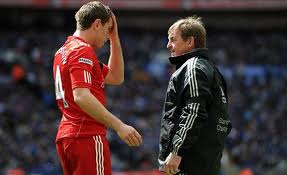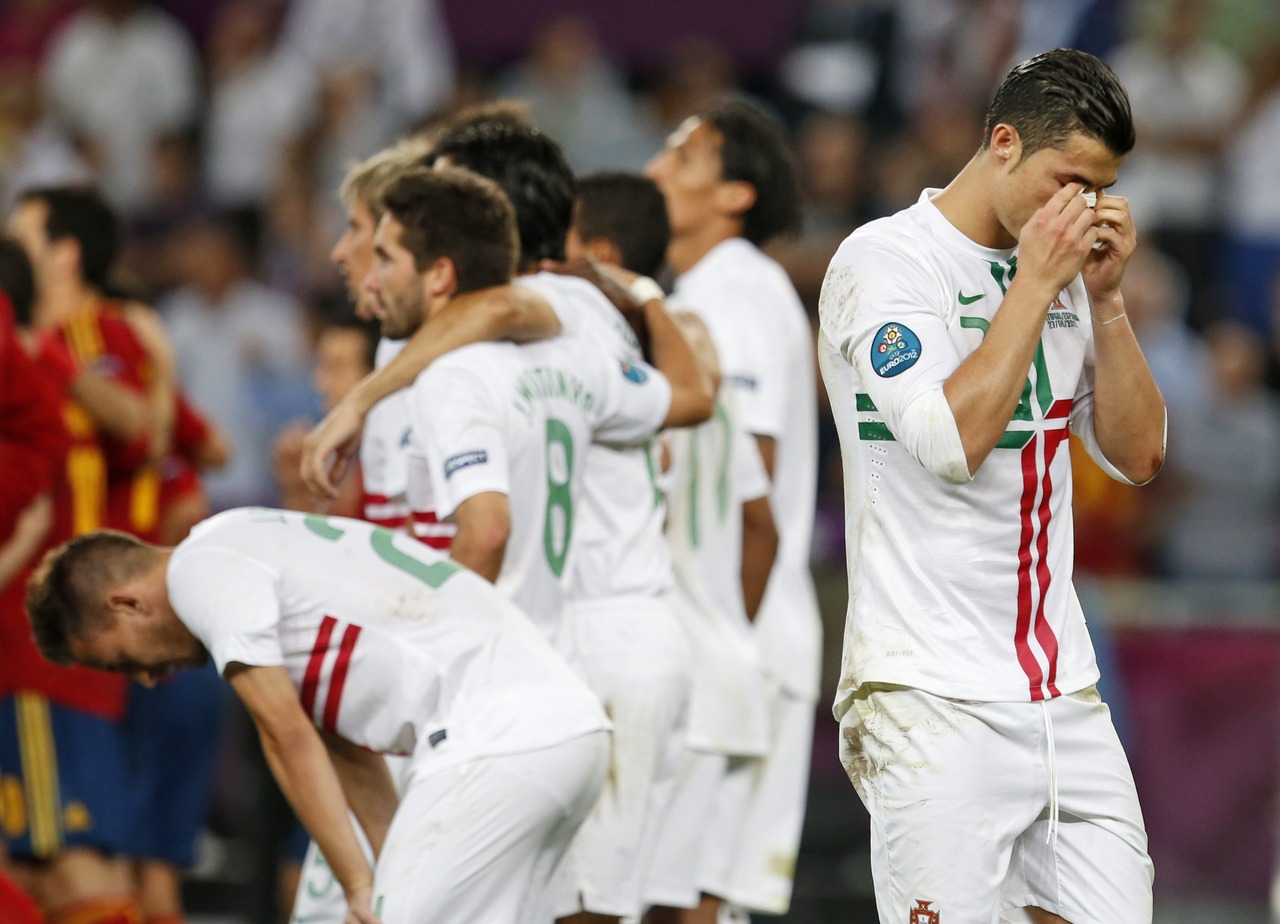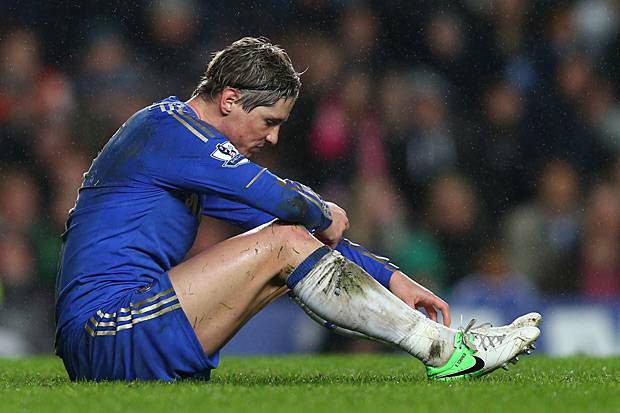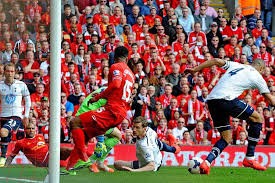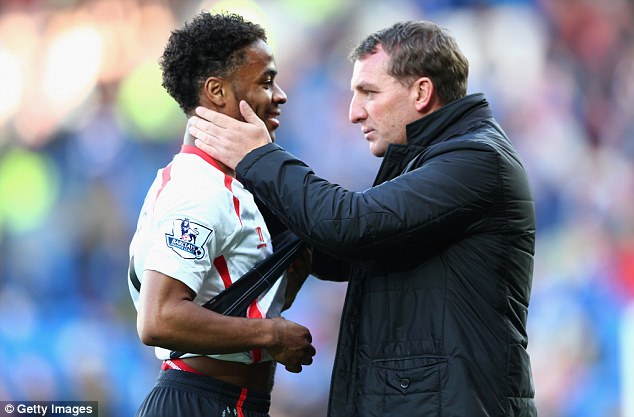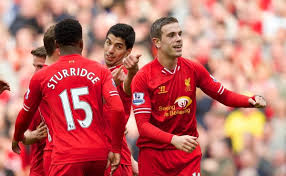By Bob Pearce.
This is a continuation and further development of the ideas explored in ‘Who’s the Star, the Player of the Team?’, ‘What are the Ingredients of a Great Team?’, and ‘The Recipe for a Great Team?’.
Let’s start with a quick question. Who is the ‘best player in the world’? Messi? Ronaldo? What about Pele, or Cruyff, or Maradona, or Zidane?
Is it coincidence that all those names considered to be the ‘best players in the world’ are goalscorers, considered flair players, and part of a successful team? But would they still be great players if taken out of their context? Would the ‘best player in the world’ be considered great if they were being asked to play in an unsuitable role? Could a player look ‘great’ in one system and ‘average’ in another? If a player’s set of attributes are matched to a suitable role you’d expect to see the player meet the requirements of the role and thrive. But all players work in partnerships and combinations. If those around them are not suitably matched to their roles it will detract from their performance. Things he requires from others around him will not be delivered. He will have to compensate for them. He will not be able to fully depend on others and this will inhibit him from fully expressing himself. Would the ‘best player in the world’ be considered great in a team that didn’t complement each other to make the most of their strengths?
That is not the question of some dumb ill-informed fan. In recent years it is increasingly being recognised that the use of data will play an influential part in the future of football analysis. And the current cutting edge issue occupying the minds of the pioneering professionals in that field is exactly this question.
Blake Wooster is the former director of Prozone, and is now running a sports start-up called 21st Club. He recently said “Sometimes we look only at the individuals and forget the context. For instance, Barcelona’s Messi is one of the best players ever, but what would happen if you took him out of that context and put him in another team? You can’t assess talent in a vacuum.”
When that context is made up of suitably matched players something happens between them. We talk about players having a ‘telepathic understanding’, being a ‘tight unit’, and we use terms like ‘bonds’ and ‘harmony’ to describe the cohesion. When the parts of the puzzle are put together each player is part of something that allows him the opportunity to be a better player. Both players ‘bring to’ and ‘take from’ the interaction. Each player now begins to glow, radiate and shine. We currently tend to explain this as simple individual improvement. Sometimes we say that they ‘gel’, they ‘click’, they are like ‘clockwork’. We see it in partnerships, in units, and sometimes even in whole teams.
Now a different question. What is the best song in the world? What makes that song great? Is it the lyric? Is it the music + lyrics? Is it the voice of the singer + the music + the lyrics? Is it the arrangement of the instruments + the voice + the music + the lyrics? Is it the interpretation of the song + the arrangement + the voice + the music + the lyrics? Is it the memories and associations we attach to all of these? Isn’t a great song the interplay and interaction of all of these elements and more (and more (and more))? Doesn’t changing any part of any of these elements change how we hear the whole song?
In football when individual elements are matched to suitable roles, and combined into a complementary strategy, the whole team becomes ‘more than the sum of their parts’. We know that both teams have 11 players but it feels like one team has more. You can count them and re-count them again and again, but our maths doesn’t seem to work. The total always comes out as more than it should, because a free bonus seems to keep sneak into the mix.
Like many football clichés, ‘more than the sum of the parts’ is conveniently ill-defined in order to allow us to nod knowingly as though we understand and agree. But what do we mean by ‘more than the sum of the parts’? It might be easy to repeat, but it’s tough to explain. Of course we mean that when we add up the numbers we always seem to get a total that is bigger than expected. But where the hell does the ’12th player’ come from if it’s not down to poor maths or strange magic?
It would seem that this phantom ’12th player’ exists in-between players, in their interplay and interactions that we so rarely discuss. The classic Johnny Mercer lyric advises that we ‘Don’t mess with Mr In-Between’, but that is exactly what I want to do. Maybe we don’t talk about him because we can’t see him. Maybe we can’t see him because we have not found a way to identify him and describe him. That is the place I want to explore. I want to move the conversation forward to describe and map what is happening between players so we can locate where this ‘more than’ comes from and so begin to see what it is that allows a ‘good’ player to become ‘great’. If we can describe that Mr In-Between role we can make him visible and make him something we can point to and then we can discuss his presence or absence. It can then be something that we can try to measure so that we can see if his impact is decreasing, and look at what can be done about actively increasing it again. Again this is not just a dumb ill-informed fan on this quest.
Pedro Marques is a Match Analyst at Manchester City. He says that “We’re trying to understand how the individual players co-operate and develop synergy as a team. Most analysis still focuses on discrete variables and actions, but most important for us is to understand the interactions.”
The simplest, most commonly used first name I can find for ‘Mr In-Between’ is Trust. I’d suggest that this is the seemingly intangible something that sneaks into the calculation when we find we have ‘more than the sum of the parts’. When a player looks at his team mate and asks himself ‘do I trust him or not?’, the difference their answer makes is not trivial, it is gigantic.
To show how dramatically important trust is, just look at what happens when you distrust someone. You are suspicious of them. There is constant uncertainty. In fact Covey & Merrill believe that “low trust is the very definition of a bad relationship.” Distrust inhibits and restricts. Where there is distrust you have to make allowances. You have to mitigate against the risks, everything must be checked and double checked, you need to have a contingency plan, you have to buy a few more baskets to move some of your eggs into, you quickly visit ‘Just-in-Case’ Insurance.Com, and hedge your bets. It’s like trying to drive at 70 mph with one your foot on the brake pedal. That is all extra energy, thought, time, resources and worry that distrust requires us to budget for, when, let’s face it, they could all be put to far more productive use. So distrust has a tangible cost. Covey & Merrill call that cost a trust ‘tax’.
Covey & Merrill refer to a 2002 Watson Wyatt study which showed that high trust companies outperformed low trust companies by nearly 300%! Because with trust comes confidence. When you do have trust, a lot of uncertainty is removed from the relationship. There is none of this wasted mitigation. All efforts, time and resources are put to constructive use.
Covey & Merrill explain that “As ‘tax’ created by low trust is real, measurable, and extremely high, so the ‘dividends’ of high trust are also real, quantifiable and incredibly high.” If trust is high it is clear how it is adding ‘more’ to the sum of the parts. Equally, if trust is low it can clearly leave you with ‘less’ than the sum of the parts. They sum it up like this:
“Trust always affects two outcomes – speed and cost. When trust goes down, speed will go down and cost will go up. When trust goes up speed will also go up and costs will go down. It’s that simple, that real, that predictable.”
Covey & Merrill get right under the surface of ‘more than the sum of the parts’ mystery. They say that the traditional formula says that Strategy times Execution equals Results: S x E = R. But Mr In-Between is missing from this formula. Either the low trust ‘tax’, which divides the output, or the high trust ‘dividend’ which multiplies it. So now we can see that the sum of Strategy times Execution is being multiplied by Trust to get our Results. (S x E) T = R.
A popular cliché that fits nicely onto a poster is that ‘trust takes years to build, seconds to break, and forever to repair’. Covey & Merrill disagree. “While restoring trust may take time, both establishing and extending trust can be done quite fast, and, once established, trust makes the playing field exceptionally quick.” They call this the ‘Speed of Trust’ and will tell you that there is nothing faster.
So when we now try to look at the interaction between two players, maybe we can try to observe whether the trust is high or low. We can look for evidence of whether they have a trustworthy relationship with each other. We can see if their behaviour is inhibited at some level by having to pay a trust ‘tax’, or whether they are confident enough to put all their elements into one basket, and receive a trust ‘dividend’.
Trust only exists between players. A useful way to visualise this idea might be that players are building two-way credibility accounts into which they are making deposits and withdrawals. Covey & Merrill list behaviours which make credibility deposits and build trust, and explain how the opposites or counterfeits of these behaviours result in withdrawals.
Obviously, the quickest way to build trust is to stop making withdrawals. A player can make big or small deposits, but typically withdrawals tend to be larger than deposits. Many small deposits will help to protect a player against occasional withdrawals. As the old saying goes, ‘take care of the pennies and the pounds will take care of themselves’. Conversely, many small withdrawals will steadily erode trust.
A player’s statement may show that he has a healthy balance and mean that he can survive occasional withdrawals without going into the red. But an unhealthy balance and regular withdrawals mean that he risks going from very low trust to being overdrawn and losing credibility. And if a player is overdrawn already……. eeeeek!
Covey & Merrill also warn us that we cannot presume that what counts as a credibility deposit to one team-mate will hold the same value to another player.
‘Trust’ can sound like a vague intangible, ethereal, unquantifiable, ‘touchy-feely’ idea, but what is this trust and what does it look like? Trust can only exist between players and within relationships. Covey & Merrill suggest it comes down to two contributions that each player brings to that relationship. The first contribution they call ‘Competence’, which they say is the combination of a player’s Capabilities and Results.
Let’s start with Capabilities. It’s what a player is able to do with the elements, talents, skills, knowledge and style he has in his toolkit that he can combine to deliver the requirements of the roles he has been assigned that will help build his team-mates’ trust in him. It’s simple. Capable players are credible. They inspire trust and confidence.
But Capabilities are just the start. It’s equally important to ask how a player puts his capabilities to use – his performance, or what Covey & Merrill call ‘Results’. If a player doesn’t deliver what is expected or required it diminishes his credibility.
They suggest there are three perspectives from which people evaluate a player’s Results. 1) is his past performance. His track record, his reputation, the things he’s done, the results he has already achieved, his CV. 2) is his present performance. This is how he is putting his capabilities to use today. And 3) is his anticipated future performance. This is how people predict he will perform in the future,
It is the combination of a player’s Capabilities toolkit and his performance Results that will determine his Competence. But there is more to Trust than just Competence.
Covey & Merrill define leadership as “getting results in a way that inspires trust.” When it comes to results, they believe that the how matters every bit as much as the what. “How you go about achieving results is as important as the results themselves, because when you establish trust, you increase your ability to get results the next time.” So what a player can do and has done is only part of the picture. Equally as important is the type of person he is. This is what Covey & Merrill call his Character, which they say is a combination of Intent and Integrity.
Is this player playing for the team or does he want to add to his medals by rushing to join a drive-thru medals club? This is is what Covey & Merrill call Intent. When others sense a player has a hidden agenda of self-interest (through glorifying themselves, grabbing headlines, adding clips to their You Tube CV and being ‘the star’), they are suspicious of everything he says and does. Covey & Merrill would say that if the player’s intent is not based on caring, contributing, seeking mutual benefit, and acting in the best interest of others, the player will pay trust ‘tax’.
So our perceptions of other people’s intent has a huge impact on trust, and Covey & Merrill make the important point that, while we may judge ourselves by our intent, we tend to judge others by their behaviour. And that is exactly how they will judge us. If people distrust us it is because of the conclusions that they draw about what we do.
Since behaviour is the visible evidence of motive and agenda, when team-mates believe that a player’s motives are based on mutual benefit, and they are more concerned with building the team, it creates credibility and inspires trust, and he will receive a trust ‘dividend’.
One Intent acts with arrogance and pride, while the other Intent acts with humility.
Which brings us to Integrity. This is not simply about honesty. Covey & Merrill say that ‘a person has integrity when there is no gap between intent and behaviour’. It is what we mean by ‘walking the talk’. Integrity is being a matching-mouth-and-trousers role model of your values and beliefs.
If a player builds a reputation for Integrity his credibility will precede him, and he will receive a huge instant deposit into his credibility accounts with team-mates.
Covey & Merrill say that your Integrity and Intent combine to determine your Character. They believe that, while demonstrating Competence is the quickest way to build trust, if you want to demolish trust quickly then you should violate a behaviour of Character.
How many times have we heard that ‘Form is temporary, but Class is permanent’? It is another of the classic football clichés that is again conveniently ill-defined in order to allow us to nod knowingly as though we understand and agree.
I’d suggest that a more accurate and helpful observation is that ‘Competence is temporary, but Character is permanent’. Whether a player is able to do a job will depend on a good match between his capabilities and the requirements of the job he is being asked to do, and the context of the team in which he plays. That is ‘situational’. Character meanwhile is not dependent on the circumstances. It is ‘who he is’! It will inhabit everything he does. It will be present whatever role and whatever team he plays in.
So in the sum (S x E) T = R, the T that is multiplying or dividing our results is made up of Capabilities, Results, Intent and Integrity. And it is the combination of these four factors that increases or decreases a player’s credibility and allows the Trust part of the equation to make the result ‘snowball’ or ‘evaporate’.
It’s worth pausing for a moment to admire the view from this position because it may not be immediately obvious just how this point of view changes the whole ball game in three significant ways.
Firstly, Trust is always part of the sum of the parts. Trust will always crank the total up or drag the total down. Trust is there when we get more than the sum of the parts. Distrust is there when we get less than the sum of parts. In fact you could reasonably argue that we were never getting just the actual sum of the parts because Trust has always been there as one of the parts to be included in the sum, and we just haven’t been counting it.
Secondly, whatever their Intent, a player is judged by his behaviour, so he has to behave trust. Every interaction is an opportunity to demonstrate their credibility to others. Every moment matters. There is no ‘off’ switch on the trust-o-meter. It is always running and because every interaction is a ‘moment of trust’, they will always be either making credibility deposits or withdrawals. So trust never sleeps. Each player has a constant stream of opportunities to make a deposit or a withdrawal to their credibility account with their team-mates. Every moment matters. No moment is trust- free.
Thirdly, how a player is judged does not just affect their relationship with one team-mate. The whole team are watching and noting his behaviour towards his colleagues in that flow of constant credibility deposit or withdrawal opportunities, and are effectively adjusting his credibility accounts with them accordingly. Everything the player does matters to everybody else in the team.
Put simply everything every player does all the time increases or decreases trust throughout the team, and so increases or decreases the efficiency and effectiveness of the whole team.
When you have the pairings of players performing at a higher level and combined into a whole team you have a well-oiled machine efficiently and effectively using their resources at peak performance. Apparently ‘average’ players become apparently ‘good’ players. Allegedly ‘good’ players become allegedly ‘great’ players. And supposedly ‘great’ players become supposedly genius players.
And as the individual player does not exist in a vacuum, so the team as a whole does not exist in a vacuum. The whole team has a relationship with the manager. What are his Capabilities, Results, Intent and Integrity doing to his credibility accounts with each player in the team?
Covey & Merrill say that:
“Trust is one of the most powerful forms of motivation and inspiration. People want to be trusted. They respond to trust. They thrive on trust… …Withholding trust creates an enormous cost. It becomes a vicious downward cycle. People tend not to trust people who don’t trust them… …It literally kills the potential enthusiasm, engagement, collaboration, and reciprocal trust.”
What kind of tax is this team paying because players do not trust each other or the manager? What is the impact of that tax on their results? When there is distrust within the team it is almost worth a goal to the opposition.
Covey & Merrill conclude that “The best leaders then focus on making the creation of trust an explicit objective.” I said earlier that they list behaviours that make credibility deposits and build trust. They call them the ‘13 Behaviours of High Trust’.
- Talk Straight
- Demonstrate Respect
- Create Transparency
- Right Wrongs
- Show Loyalty
- Deliver Results
- Get Better
- Confront Reality
- Clarify Expectations
- Practice Accountability
- Listen First
- Keep Commitments
- Extend Trust
In the children’s game of ‘Who am I?’ these 13 behaviours would be a pretty good set of clues for Brendan Rodgers.
At some point when the trust spirals up in the pairs, within units, across the team, between the team and the coach, that total that is ‘more than the sum of the parts’ becomes visible to the opposition too. When the opposition see Mr In-Between on the team sheet it breeds caution, induces, doubt and gives birth to fear.
There are many ways in which this idea could be explored further. Football has been evolving towards increasingly flexible formations and styles of play requiring greater flexibility from the players to be able to perform across a range of interchangeable roles. Intelligent coaches seeking to get the most from their 11 players and so gain an advantage over their opponent must reduce inefficiency and ineffectiveness and increase productivity. Of the XI it is only the keeper and two centre-backs that remain relatively static in their roles. We are seeing the growth of what could be called ‘Just-in-Time’ football (this idea of high quality, low waste, and minimal overheads is explored in more detail in my next article ‘Jitball’s Coming Home’). The obvious next challenge is to identify a set of measurable behaviours that indicate trust and distrust. If these can be identified, can they be be used when making judgements about transfer targets? Then there is the question of if a player’s behaviour creates distrust, should he be ‘rested’ for the sake of the team (no matter who he is)? And of course there is a whole article to be written on the fall and rise of the credibility of Luis Suarez.
Covey & Merrill say “While high trust won’t necessarily rescue a poor strategy, low trust will almost always derail a good one.” Distrust affects players. Distrust impacts on the team. Distrust undermines performances. Distrust damages results. What do you mean ‘Don’t mess with Mr In-Between’? Surely the message is ‘Don’t miss out Mr In-Between’. Who was the real man of the match? Mr In-Between. Who was the true player of the year? Mr In-Between.
In March 2014 Brendan Rodgers said that “Teams spend a billion quid and it does not guarantee anything. Once you put your ideas into place and the players start to crack it, we will have success. Money can’t buy that.”
Mr In-Between cannot be bought. He’s not for sale at any price. The nearest you can get is to buy a replica shirt with ‘Mr In-Between’ and ’11+’ on the back.
The combination of elements into roles and the combination of roles into strategy provide the combination that unlocks the manacles that are holding the team back. Trust unlocks inhibitions. The foot comes off the brake pedal. Talent is let off the leash. All potential disappears because it is no longer latent. Trust transforms the possible into the actual.
Simply put ‘Trust wins Trophies’.
Sources
‘The Winning formula’ Wired magazine
‘The Speed of Trust’ by Stephen M. R. Covey with Rebecca R. Merrill.

